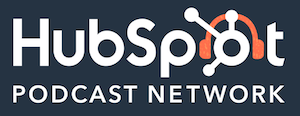Building An Effective Board For Your Startup
Building An Effective Board For Your Startup written by John Jantsch read more at Duct Tape Marketing
Marketing Podcast with Brad Feld
 In this episode of the Duct Tape Marketing Podcast, I interview Brad Feld. Brad has been an early-stage investor and entrepreneur since 1987. Prior to co-founding Foundry, he co-founded Mobius Venture Capital and is also a co-founder of Techstars. He’s also an author of a number of books including — Startup Boards: A Field Guide to Building and Leading an Effective Board of Directors.
In this episode of the Duct Tape Marketing Podcast, I interview Brad Feld. Brad has been an early-stage investor and entrepreneur since 1987. Prior to co-founding Foundry, he co-founded Mobius Venture Capital and is also a co-founder of Techstars. He’s also an author of a number of books including — Startup Boards: A Field Guide to Building and Leading an Effective Board of Directors.
![]()
![]()
Key Takeaway:
The first time many founders see the inside of a board room is when they step in to lead their board. But how do boards work? How should they be structured, managed, and leveraged so that startups can grow, avoid pitfalls, and get the best out of their boards? In this episode, author, investor, and entrepreneur, Brad Feld, shares his advice and guidance with CEOs, board members, investors, and anyone aspiring to serve on a board on what it takes to build and lead an effective board of directors.
Questions I ask Brad Feld:
- [1:31] Why did you create a second edition?
- [4:38] Could you talk a little bit about the research you’ve done on the evolution of boards?
- [6:52] What are the mistakes people tend to make when building a board?
- [10:38] What point do you tell someone they need a board?
- [12:15] Are there things that need to be in place if you’re a startup company before building a board?
- [13:45] If I’m asked to be on a board, what should be expected of me and vice versa, if I’m a founder, you know, what am I expecting a board member to ultimately contribute?
- [16:30] How important is it that board members like and respect each other?
- [18:46] Where can people find out more about startup boards and the work that you’re doing?
More About Brad Feld:
- His book – Startup Boards: A Field Guide to Building and Leading an Effective Board of Directors
- Feld.com
Take The Marketing Assessment:
-
- Take the Assessment
Like this show? Click on over and give us a review on iTunes, please!
John Jantsch (00:00): This episode or the duct tape marketing podcast is brought to you by the nudge podcast, hosted by Phil Agnew and brought to you by the HubSpot podcast network. You can learn the science behind great marketing with bite size 20 minute episodes packed with practical advice from admired marketers and behavioral scientists. Nudge is a fast pace, but still insightful with real world examples that you can apply her recent issue. Talked about the, the idea of getting your customers, your prospects in the habit of buying from you or listening to you or following you habit based marketing, download, nudge, wherever you get your podcasts.
(00:47): Hello, and welcome to another episode of the duct tape marketing podcast. This is John Jantsch and my guest today is Brad Feld. He’s been an early stage investor in entrepreneur since 1987. Co-founder of Foundry Mo’s venture capital and tech stars, but he’s also the author of a number of books, including one we’re gonna talk about today. Startup boards, a field guide to building and leading and effective board of directors. So Brad, welcome back to the show.
Brad Feld (01:14): It’s great to be 4,000 feet below you. Can’t always, I think I’d rather be 4,000 feet higher than I am right now. I’d
John Jantsch (01:21): Rather be a little toasty out there. So I have authors back that update books quite often, and sort of the logical sort of cliche question
Brad Feld (01:36): A couple of things. First, the first edition of startup boards was good, but I was not proud of it. It was a unique book. There really weren’t any books written for entrepreneurs about boards, but I wrote it during a time period that I went through a six month depressive episode. I was very function, but it was a real grind. And I wasn’t really enjoying the, the work of the book. And my co-author at the time, me Hendra did a great job, including putting up with me, but in the end, you know, when I reflected on the book and read it, you know, I usually read a book I write a year later and just sort of think about it again. Good, but it wasn’t one where I’m like, wow, I’m really proud of it. So we took the opportunity to really improve it. We added a third coauthor coauthor, Matt Bloomberg, who I’m sure we’ll talk about.
(02:19): And Matt really was extremely helpful, but I was also very motivated to turn it into a great book this time around the other big thing was that we wrote the book in 2013 and the book didn’t age. Well, in terms of yeah, temporary boards and specifically, we had a bunch of sidebars from board members and CEOs and experienced entrepreneurs and almost all of them were from men. And we had a bunch of quotes and they were also almost all for men. And so when we started talking to people about a second edition of the book, a couple of the women that we reached out to, you know, made comments like one, one of ’em said that I don’t encounter a woman until page 82 in your book. And so it doesn’t really make me feel like the books for me. And of course, you know, there’s been a lot of discussion in the last three or four years about diversity, both gender and racial on boards. And that would be an example of the book, not aging. Well, yeah. Yeah. So we took advantage of writing a second addition to really change the voices, changed the language. I discovered a pronoun dynamic called the singular, they, which is totally fascinating. And sort of, I went down a multi-hour rapid hole on the evolution of the English language. And it turns out the singular, they is a much more accessible way to write than alternating. He and she, or trying to do he and she, or he slash she. Yeah.
John Jantsch (03:36): It gets a little clunky, doesn’t it?
Brad Feld (03:37): Yeah. And on top of all of it, right, you also have people who are, who don’t identify as either he or she at this point, just making the book accessible in a way where the idea of a board, uh, and being on a board is something that anyone should feel like in the context of entrepreneur ship, it talks to a handful of other things that we really improve. We make chapters a lot shorter. We refactored a lot of stuff in terms of how we organized the thinking. The first book had much too high, a wall to climb every book I’ve ever written. You know, you try to get the reader into the book in the first 50 to a hundred pages, right. Without making the wall too high. And then you can, after 50, 60, 70 pages start introducing some stuff that is a little bit harder, a little chewier, we had too much chewy stuff up front.
John Jantsch (04:21): Yeah. That’s interesting. My last book, my editor said, we need to take this stuff in the back and put it in the front. I mean, it was the first time I’ve really, and that was really the idea. It’s like, you really give the value of the book here, you know, say it in the first paragraph, you know, so people get in right away. You also did a lot of research between 2013 and 2022, wherever we are today on kind of the evolution of boards in general, haven’t you?
Brad Feld (04:47): Yeah. Although I would say most of my research has been living it. Yeah, yeah. Yeah. So I’ve been on boards, you know, going back to 1994 was my first board shortly after I sold my first company. I guess I was on the board of my first company, but we didn’t really, we didn’t have a board. We had three founders and it was myself, my partner and my dad and we were the board, but I joined a private company board in 94. That was incredibly enlightening experience. And it was a lot of fun. There was some definite challenges and in the end, the company got acquired and it was a good outcome. And so I felt like I participated in contributed meaningfully, but then since then both private company boards and public company boards, I’ve been on a large number of them. And I don’t have any idea what the number is.
(05:26): It’s, you know, the wide range would be greater than a hundred, less than a thousand. And I’ve been on some spectacular boards. I’ve been on some tragically, awful boards, the vast majority of boards I’ve been on have been somewhere in the middle, right. They’ve been, you know, adequate, and I’ve spent a lot of time as a board member individually, but also as a participant in a board, reflecting on what makes both a good board member, but also makes a good board. Yeah. Or the board as a team. And I’ve tried to weave a lot of that experience into this book. And this is another place where Matt, Matt Bloomberg was really helpful for two reasons. One is, um, he’s been a multi-time CEO. So he’s had several boards. I was on his board of his prior company return path, which he ran for 19 years or 20 years.
(06:16): I was on it for 19 years. Huh. So a very long experience with him. And that was his first company. His company that he runs now is a company called bolster, which is an executive marketplace for both full-time and fractional execs, including board members. And so he spent a lot of time thinking hard about not just what makes a good board member, but how somebody becomes board ready. And so all of that kind of experiential research was what came into the book versus a bunch of academic research. You know, that says, this is, you know, we did a statistical study in blah or qualitative assertions, not based off of lots of experience.
John Jantsch (06:52): So the book is mostly about what you should do, but I find that people, you can get leverage. If you actually talk about the problem
Brad Feld (07:13): Yeah. Well, we have a fair amount of that in the book too, because we’ve tried to balance it between positive and negative. And we also tried not to be in the language of you should, you know, in terms of it more giving people a framing of how to think about it. But to the specific question, there’s some very simple things that people make mistakes around. When they think about the board, including reasons why early stage entrepreneurs and startup entrepreneurs don’t create boards. One of the mistakes is this sort of desire need for control. And his view is that I want to control my company and therefore I wanna control my board and sort of the implications of that. Another example of a mistake is to not think of the board as a team, but to think of them as individuals and Jeff Lawson, who we quote in the book had a great quote for this, which is as I get to build two teams, my leadership team.
(08:01): Yeah. And my board and yeah, my board can fire me. So I need to just sort of deal with that reality, but that’s fine. You know, until they fire me, I have an opportunity to build a second team that can really help me and the company be successful. Another mistake people make is, and this is sort of a cliche, it’s become cliche. You say to an entrepreneur, well, who do you wanna add to your board? And they say, well, I wanna make sure that I get, you know, I want diversity on my board, but I want to get someone who’s been on a bunch of boards and has been a CEO multiple times. I’m like, all right. So, you know, you’re already starting with a pool. That’s smaller because you’re trying to get a of non-white men, for example. And you know, all the people that have those characteristics are already on too many boards, cuz there’s a lot of demand for them.
(08:42): And so you’re not really sort of thinking about it from the standpoint of what functional value do you want to get out of the board member versus the, you know, the sort of reputational value. And I could keep going the last ID end with though here, which I think is really interesting. It was interesting when it came up, Matt came up with an idea that he calls the rule of one and or the rules of one and fundamentally boards become very imbalanced. Uh, a lot of times founders try to control the boards at the beginning and then you start raising money from VCs and with each round and other VC ends up on the board. And all of a sudden you got founders on the boards and VC’s on the board and it’s just not a healthy board. You’re not building a team, that’s a board.
(09:21): And so Matt’s rule of one includes the idea that for every VC that you add to the board, you had an independent director and his idea of a balance board is the CEO who could also be the founder and then an independent director and a VC director. And for every VC director, you add an independent director. Now there are definitely, I don’t necessarily agree with him that there should only be the CEO on the board, especially the, CEO’s not the founder. A lot of times there’s a lot of value to have a second founder on the board or if the CEO is not a founder, but his framework was really helpful, like in clarifying this idea that even at the very beginning, you’re trying to build this team of highly effective participants rather than create a controlled dynamic or defend against a control dynamic.
John Jantsch (10:04): Yeah. And now let’s hear from a sponsor, you know, today everybody’s online, but are they finding your website, grab the online spotlight and your customer’s attention with some rush from content and SEO to ads and social media. Semrush is your one stop shop for online marketing build, manage and measure campaigns across all channels faster and easier. Are you ready to take your business to the next level? Get seen, get Semrush, visit Semrush that’s Semush.com/go to try it free for seven days. So at what point do you tell people they need one? I mean, should somebody have an idea for a business and start thinking a board’s gonna be an aspect of it?
Brad Feld (10:45): Well, from a purely legal perspective, once you create your company formally, whether it’s a, you know, incorporated or it’s an LLC or even an S Corp by definition, your company has a legal thing called a board that might have one person. Yeah. You, my general view is if your intention is to grow your business beyond just you having a board from the early stages is very helpful. Um, at the minimum, it gives you a group of people other than you and your founder or founders to engage with you. As your thinking through the business, it also creates some accountability for communication and some rigor around stepping back and thinking about what’s going on with your business. There are plenty of people who think that, you know, creating a board at the earliest stages is too early. I just don’t, I’ve never, I’ve seen the opposite happen so many more times, which is delaying creating a board results in the company going off the rails.
(11:40): Yeah. I very rarely there, I can think of a few cases where a board was not, you know, as harmful to a very young company for some reason, but very few, most of the time, if the board members know that their job is to help the founders be successful, their job is not to torture the founders. Their job is not a purely governance one, cuz there’s just not a lot of governance stuff that needs to happen at the very early stages. If you have the right mindset as a board member, which is you have some formal responsibilities, but really your job here is to help the entrepreneurs be successful. Early board can be very powerful.
John Jantsch (12:15): So a little bit of the flip side of that, are there things that need to be in place if you’re a startup company? I mean, rather than saying, yeah, let’s just go get a board. I mean, are there some things that you need to have worked out first?
Brad Feld (12:28): I mean it sure, but not in a, again, other than the legal creation of a formal company. Yeah, not really. I mean, most of the time when you create a board, even if it’s relatively early in your life, you’re gonna create some structure around that board. You’re gonna create indemnification agreement. So the directors liabilities are covered by the company. You’re probably gonna have some rules of engagement for how the board members and the company interact. Whether even if they’re informal, you know, you’re gonna wanna be in a position where you can grant equity, uh, to board members for service. Because generally speaking for private boards, you know, you should compensate your board members with, you know, a non-zero but modest amount of equity for their board service. So, but you know, it’s very variable. I mean, I think about situations where a lot of times at the very early stages, somebody says, well, I’m gonna just create a bunch of advisors or an advisory. Right. And that’s fine. And we talk about that in the book. Like that’s a useful sort of way to wander into creating a formal board with the nuance that if you create something like an advisory board, be serious about it. Yeah. Versus just having lists of advisors that you can put on your website, you know, to give you social, social benefit, but nothing else.
John Jantsch (13:45): So what should a board, I guess this could go either way, what should a board member expect to bring? So like if I’m asked to be on a board, what should be expected of me vice versa. If I’m a founder, you know, what am I expecting a board member to ultimately contribute?
Brad Feld (14:00): I think there’s two different, two different things to ponder. One is, uh, what your role and your own expectation and your philosophy of how you’re gonna show up as a board member. So I’ll just describe mine. I think everybody can define their own, but here’s how I define mine. When I’m on a board, I really only wanna make one decision. And that decision is whether or not I support the CEO. Huh? If I support her, my job is to work for her. If for some reason I stop supporting her because of whatever’s going on. My job is to try to get back to a place where I support her and that doesn’t always happen. I mean the one decision that I wanna make as a board member is do I support CEO? And if I ultimately, don’t the one tool I generally have as a board member, not unilaterally, but as a member of a group of people would be to replace a CEO. So I bring that mindset because every CEO I’ve ever worked with needs different things. And the idea that I’m showing up with the generic playbook of
John Jantsch (15:02): Right,
Brad Feld (15:08): Just not EEO should look at, look at their board from the frame of reference of, I want to get different things from different board members. And ultimately I want that board to be a functioning team. So for example, if you add people to your board and every single person on your board is a deal, chunky, loves to do transactions, loves to buy and sell. Companies loves to do deals. Guess what? Your board’s always gonna be pushing you to do deals. Yeah. And you’re always gonna be spending too much time talking about doing deals. If your board is full of people who are finance, financial oriented, either investor or CFO types, you’re gonna spend an awful lot of time on your financials. Yeah. Having a blend of people that have product experience, go to market experience, finance experience, deal, legal, whatever. And having that spread across the board so that the board really can bring different things is powerful. And I think this then comes to the other piece of this, which is a lot of people add board members because they want help with networking or they want help with financing or raising money. And most good board members can be helpful with that. But if that’s a primary reason, you want that person on the board and there’s nothing else that is causing you to want to add that person to the board, it’s worth rethinking whether that’s the best person for the board relative to the other things that somebody could be bringing.
John Jantsch (16:30): So you mentioned the idea of, of this being a team, a board, how important is it that they like each other, that they, you know, that they respect each other? Is that important?
Brad Feld (16:38): Really? I’m gonna separate respect and like you
John Jantsch (16:41): Sure.
Brad Feld (16:42): I think that’s the key nuance. I think respect is critical if you don’t respect each other as board members, who’ve got a fundamental problem. And I have definitely been on boards where there were people who didn’t respect each other and you know, that created a lot of dissonance. And in a lot of cases, just fundamental dysfunction when you ran into situations that were challenging and difficult, right? That’s in the context of respect, I’ve also been on boards where people, you know, people lied, people were disingenuous. People, you know, did things behind other people’s backs, whether it was the CEO or board members that were very destructive and very hurtful to the company, not just emotionally hurtful, but fundamentally problematic. Those things are, I mean, those things exist. Those are problems. And the tone of the board and the tone set by the, whether it’s the chair or the CEO or the lead director, whoever is responsible for driving the board behavior that, that has to be paid attention to.
(17:38): I’ll separate that from like, I definitely have been on lots of boards of people who I would consider them business associates, but they’re not friends. Yeah. And they probably consider me a business associate, not a friend or they’re people who you get along with, but you know, you don’t wanna spend time with them. And then there’s the other end of the spectrum, which is people who you have just real genuine affection for. Yeah. And you know, you’re emotionally engaged with and, you know, in alike kind of way. So I, I think it’s critical that every board member respect every other board member, I don’t think it’s necessary that every board member, like every other board member, but it sure does help when in a team like any team. Right. If even if you don’t necessarily quote like the person, if you don’t at the same time, don’t hate the person
John Jantsch (18:36): Absolutely. So Brad tell people where they can find more about startup boards and really the work you’re doing. I think you’re doing work with bolster with Matt as, as well is
Brad Feld (18:45): Yeah. I’m an investor. I’m an investor in Matt’s company bolster. Yeah. The books available, you know, online at any online bookstore that you happen to, like it’s called startup boards. And if you just do startup boards Feld as the search, I’m sure it’ll show up. The Google will deliver you. Lots of choices. We, uh, we also@feld.com, which is my blog. I’ve got links to all the books I’ve written. So it’s got a link to startup boards there with a bunch of additional content. And then Matt’s company bolster, it’s, uh, bolster.com. He’s got various again, links there and he’s written two other books, one called startup CEO, and one called startup CXO. And they’re both really effective books if you’re a startup CEO or you’re an executive at a startup for helping sort of process through and think through different ways, uh, to approach your job and the role and responsibility that they have in these three books, startup, CEO, CXO, and startup boards are kind of a trilogy makes me think of token
(19:48): Yeah.
John Jantsch (19:49): Awesome. Well again, thanks for taking time to stop by the duct tape marketing podcast. And hopefully we’ll see you one of these days out in the mountains,
Brad Feld (19:56): John, it’s always a pleasure.
John Jantsch (19:59): Hey, and one final thing before you go, you know how I talk about marketing strategy strategy before tactics? Well, sometimes it can be hard to understand where you stand in that what needs to be done with regard to creating a marketing strategy. So we created a free tool for you. It’s called the marketing strategy assessment. You can find it@ marketingassessment.co. check out our free marketing assessment and learn where you are with your strategy today. That’s just marketingassessment.co I’d love to chat with you about the results that you get.
Sign up to receive email updates
Enter your name and email address below and I’ll send you periodic updates about the podcast.
This episode of the Duct Tape Marketing Podcast is brought to you by the HubSpot Podcast Network and Semrush.

HubSpot Podcast Network is the audio destination for business professionals who seek the best education and inspiration on how to grow a business.
![]()
Everybody’s online, but are they finding your website? Grab the online spotlight and your customers’ attention with Semrush. From Content and SEO to ads and social media, Semrush is your one-stop-shop for online marketing. Build, manage, and measure campaigns —across all channels — faster and easier. Are you ready to take your business to the next level? Get seen. Get Semrush. Visit semrush.com/go to try it free for 7 days.








